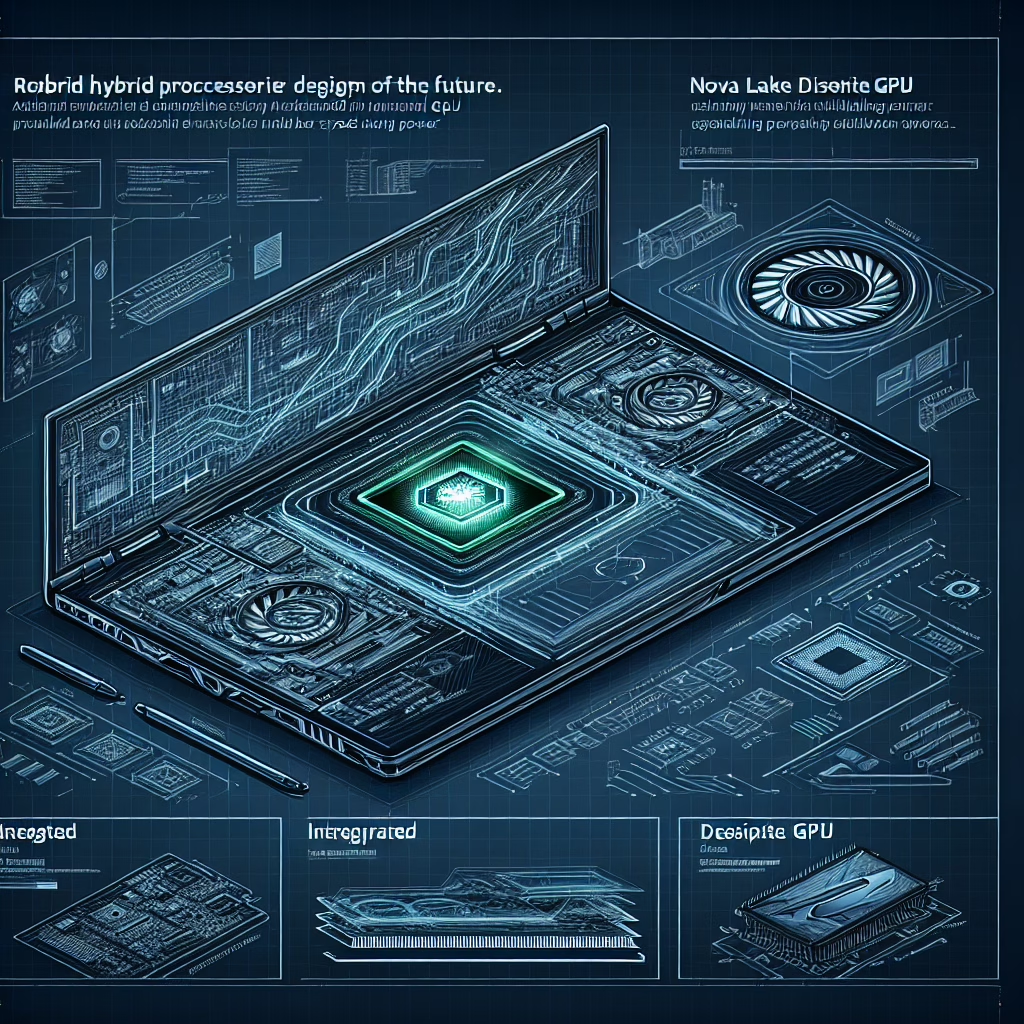In the ever-evolving world of computing, Intel’s latest buzz is all about their upcoming Nova Lake processors. These intriguing chips are rumored to feature a unique hybrid architecture, sparking curiosity among tech enthusiasts about whether we are finally moving away from discrete GPUs. Spoiler alert: it’s an exciting time to be alive in the tech space!
What’s All the Hype About Hybrid Architecture?
Let’s break it down! Hybrid architecture isn’t just a fancy term thrown around by marketing teams; it’s actually a brilliant blend of performance and efficiency. Imagine your processor as a high-performing athlete who also knows how to relax and recuperate. Intel aims to achieve this balance by combining high-performance cores with energy-efficient ones.
This dual-core approach means that when you need raw power for gaming or video editing (we see you, graphics enthusiasts!), the high-performance cores step up to the plate. But during mundane tasks, like browsing cat videos or online shopping (because who doesn’t need more shoes?), the energy-efficient cores kick in, saving power and keeping your laptop cooler than a cucumber in a freezer.
Are Discrete GPUs Becoming Obsolete?
Now, let’s address the elephant in the room: are we really saying goodbye to discrete GPUs? It’s not quite as simple as that! While Intel’s Nova Lake processors may pave the way for integrated graphics capable of competing with traditional GPUs, this doesn’t mean we’ll see a mass extinction of discrete graphics cards anytime soon.
For hardcore gamers and professionals who rely on immense graphical power—think 4K gaming or heavy CAD workloads—discrete GPUs remain the reigning champions. However, as hybrid architectures improve, we might witness integrated graphics stepping up their game. Imagine a future where you don’t need to spend your life savings on a graphics card but still achieve stunning visuals on your screen. Dreamy, right?
The Potential Impact on Gaming and Content Creation
With Intel’s move towards hybrid architecture, gaming and content creation could see significant shifts. Imagine playing your favorite games at higher settings without needing an expensive rig! That’s what hybrid architectures aim to deliver—performance without breaking the bank.
Moreover, content creators who juggle video editing, 3D rendering, and streaming might find these processors game-changing. A seamless workflow becomes possible as these processors adapt to different tasks with ease. So whether you’re rendering animations or going live on Twitch, expect smoother experiences ahead.
The Future is Bright (and Hybrid)
As we look to the future of computing in 2025, it’s clear that Intel’s Nova Lake processors could usher in a new era. With their unique hybrid architecture, they promise innovation while challenging our understanding of what’s possible with integrated graphics. This could lead to more affordable computing solutions without sacrificing performance.
However, let’s not throw our discrete GPUs under the bus just yet! They will likely continue to thrive alongside these new chips, as both options cater to different user needs. Gamers might still prefer incremental upgrades in discrete GPUs to enhance high-end gaming performance.
Conclusion: The Tech Journey Ahead
In conclusion, Intel’s Nova Lake processors represent an exciting leap forward in CPU technology with their unique hybrid architecture. As we navigate through 2025 and beyond, we can anticipate significant changes in how we think about computing power and graphics processing. Who knows? We might soon be living in a world where our laptops can handle all our tasks efficiently while looking fabulous!
What are your thoughts on this potential shift? Are you ready to embrace integrated graphics, or do you believe discrete GPUs will reign supreme? Let us know in the comments below!
A special thank you to TechRadar for their insightful article that inspired this piece! Keep your finger on the pulse of technology by following related discussions and articles.

